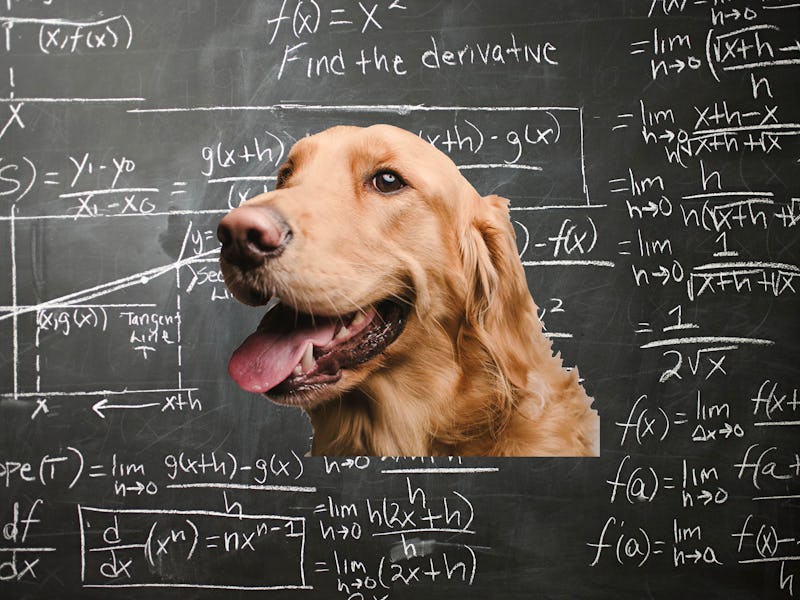Scientists discover dogs can do math, too
Dogs and humans appear to use the same brain area to compute basic numbers.

Dog lovers know: All dogs are very good boys and girls. But our favorite canine companions are often painted as dopey — lovably so — and unintelligent. But a new study suggests it is high time to abandon that stereotype and give pooches’ cognitive skills a little more credit.
New research suggests that dogs are not only smarter than you might think — they’re capable of doing something many humans aren’t so great at: math. Turns out dogs have a propensity for numbers similar to that of baby humans and other primates, finds a study published this week in the journal Biology Letters.
Primates — including homo sapiens — are able to estimate quantities using a mental tool called the approximate number system, a key skill that equips them to evade predators, forage for food, and more. To see if dogs have a similar system, researchers conducted brain scans on 11 untrained dogs of various breeds.
The team used a functional MRI machine to observe the brains of awake pups. They showed the dogs various arrays of dots, and tracked the dogs’ brain activity to see how it changed.
Research participants included Pearl the golden retriever; Daisy the pitbull mix; and Caylin the border collie. All eleven dogs, one can assume, are Very Good.
When the dogs compute basic numbers, a specific part of the brain activated. It’s called the parietotemporal cortex, and it’s the same part of the brain that humans use to do their own basic counting.
The key was looking at the ratios between the dot arrays. When the ratio between two side-by-side dot arrays was more dissimilar — that is, when the numbers were further apart — eight of the 11 dogs showed more brain activity than when the numbers were closer together.
The ability to process basic number quantities is spontaneous, the researchers suggest. That means the dogs didn’t appear to require any training or rewards.
Math-whizz mutts could help humans
This isn’t the first time researchers have tested whether dogs have the ability to count. In a 2002 study published in the journal Animal Cognition, researchers used treats in a bowl to “present” dogs with calculations. Dogs were shown three basic sums — 1+1=2, 1+1=1, and 1+1=3 — and researchers measured how much time they spent looking at both the problem and its solution.
They found that when dogs saw an unexpected result, they spent longer looking at it — suggesting that they were predicting the correct answer to the equation.
The ability to count small numbers seems to be widespread throughout the animal kingdom, the researchers say. That includes us humans. Drawing links between cognition in animals and humans could hold clues human evolution and brain development.
The findings also suggest that having the ability to quickly count basic numbers — and the brain mechanisms behind it — are “deeply conserved over evolutionary time,” the researchers write, “perhaps due to a role in foraging or predation.”
Abstract:
The approximate number system (ANS), which supports the rapid estimation of quantity, emerges early in human development and is widespread across species. Neural evidence from both human and non-human primates suggests the parietal cortex as a primary locus of numerical estimation, but it is unclear whether the numerical competencies observed across non-primate species are subserved by similar neural mechanisms. Moreover, because studies with non-human animals typically involve extensive training, little is known about the spontaneous numerical capacities of non-human animals. To address these questions, we examined the neural underpinnings of number perception using awake canine functional magnetic resonance imaging. Dogs passively viewed dot arrays that varied in ratio and, critically, received no task-relevant training or exposure prior to testing. We found evidence of ratio-dependent activation, which is a key feature of the ANS, in canine parietotemporal cortex in the majority of dogs tested. This finding is suggestive of a neural mechanism for quantity perception that has been conserved across mammalian evolution.